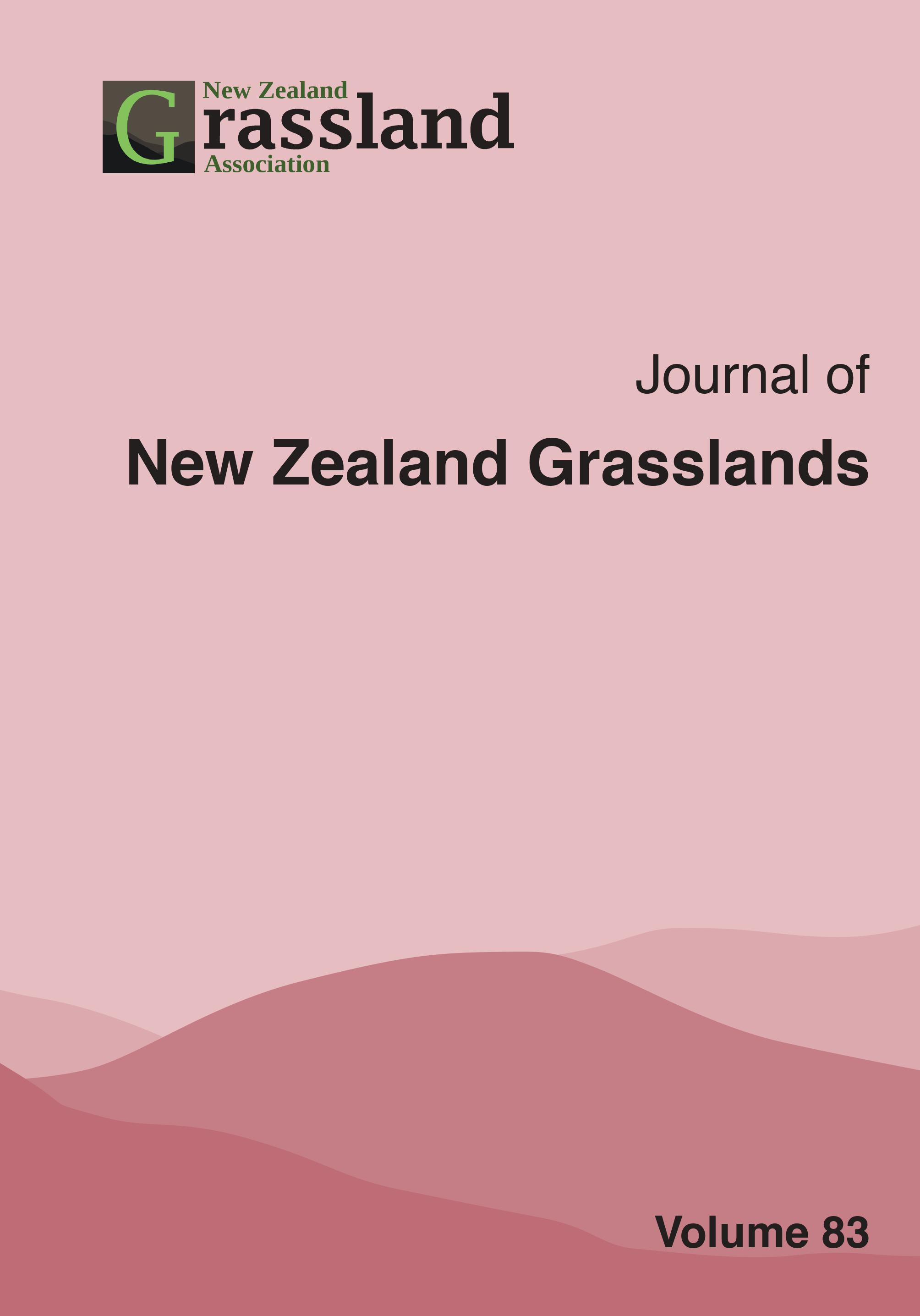Greenhouse gas emissions from New Zealand sheep and beef farms
DOI:
https://doi.org/10.33584/jnzg.2021.83.3501Abstract
This project aimed to develop a dataset containing animal policies, production efficiencies, and greenhouse gas (GHG) emissions of a large number of sheep and beef farms, and to examine the relationships between farm management and farm physical constraints, and GHG emissions. We used the farm-scale model Farmax to estimate feed inventories, livestock policies and GHG emissions of 170 New Zealand sheep and beef farms. Emissions were calculated from Farmax outputs using Agricultural Inventory methodology. We used a quantitative approach to cluster farms based on physical constraints and management attributes. Mean annual biological GHG emissions from the modelled farms were 3,662 kg CO2 equivalents (CO2-e) per effective hectare, and ranged from 157 to 7,096 kg CO2-e/effective ha. As stocking rate and animal product (wool + net carcass weight) per effective hectare increased, GHG emissions increased. However, there was considerable variability in the data; farms with GHG emissions of approximately 4,000 kg CO2-e/effective ha had an almost three-fold difference in animal product (range 129 to 360 kg/effective ha). Our work provides a holistic assessment of the farm-scale drivers of GHG emissions and a comprehensive current state of affairs or baseline from which future trends in farm-scale GHG emissions can be established.
Downloads
Downloads
Published
How to Cite
License

This work is licensed under a Creative Commons Attribution-ShareAlike 4.0 International License.
Copyright
This work is licensed under a Creative Commons Attribution-Non Commercial-NoDerivatives 4.0 International License. Rights granted to the New Zealand Grassland Association through this agreement are non-exclusive. You are free to publish the work(s) elsewhere and no ownership is assumed by the NZGA when storing or curating an electronic version of the work(s). The author(s) will receive no monetary return from the Association for the use of material contained in the manuscript. If I am one of several co-authors, I hereby confirm that I am authorized by my co-authors to grant this Licence as their agent on their behalf. For the avoidance of doubt, this includes the rights to supply the article in electronic and online forms and systems.




